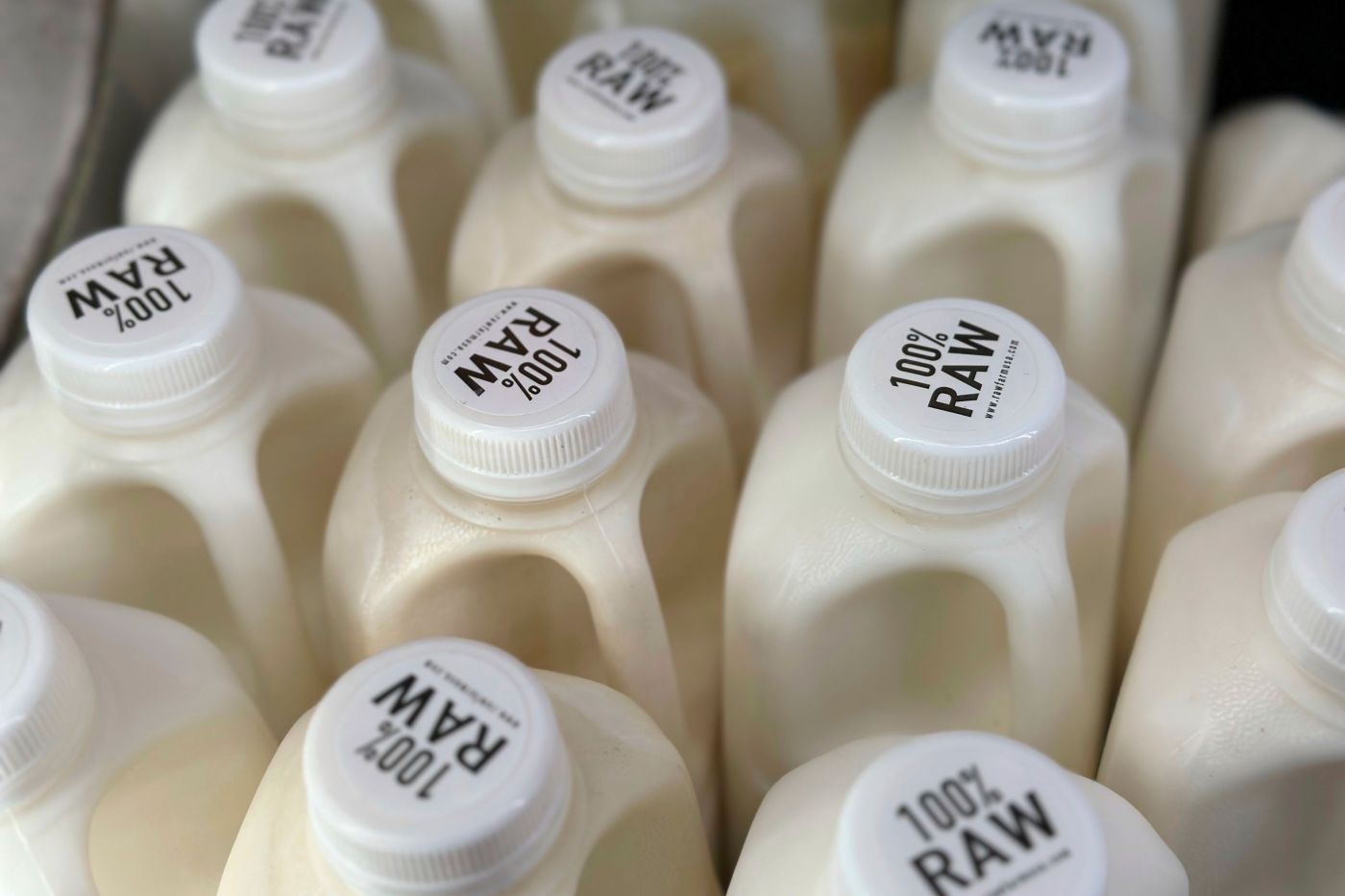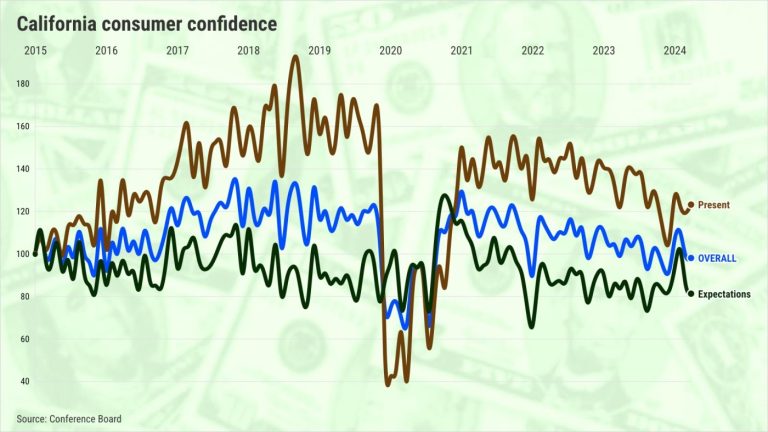Raw milk has been linked to at least 10 illnesses in California, according to the California Department of Public Health. None of the illnesses has been identified as bird flu, the agency said.
Related Articles
Bay Area bird flu probe has raw milk connection
How measles, whooping cough, and worse could roar back on RFK Jr.’s watch
Marin County officials report possible bird flu case in child
Avian flu: USDA to begin expanded testing of milk supply in 6 states, including California
California halts the sales of raw milk due to bird flu virus contamination
“Since announcing multiple recalls of raw milk due to contamination with bird flu, state and local public health experts have received reports of illnesses from 10 individuals who reported drinking raw milk. Initial county and state public health laboratory testing has not identified any positive bird flu infections in these individuals to date,” a spokesperson said Thursday.
The department didn’t immediately provide additional information about the 10 illnesses.
RELATED: Bay Area bird flu probe has raw milk connection
Health officials in Northern California are also investigating a possible case of bird flu in a child who became ill after drinking raw milk in November, Marin County Public Health said Tuesday. The child went to a local emergency department with fever and vomiting after drinking raw milk and tested positive for influenza A, the county said. However, the US Centers for Disease Control and Prevention said Thursday that its tests of samples from the child were negative for influenza.
Interest in raw milk has surged amid support from some high-profile fans, including Robert F. Kennedy Jr., President-elect Donald Trump’s choice to lead the US Department of Health and Human Services.
Although some fans claim there are nutritional benefits to drinking raw milk, health experts say any purported benefits do not outweigh the associated risks.
Raw milk and some types of raw cheese can be a source of many kinds of germs, and lab tests show that bird flu virus in raw milk can be infectious.
Raw milk and cream products from Fresno-based Raw Farm were recalled and distribution of the products was last month halted after samples tested positive for bird flu. Two possible cases of bird flu were reported in indoor cats who had consumed raw milk from Raw Farm, the Los Angeles County Department of Public Health said Thursday.
In response to the increasing presence of the virus, the US Department of Agriculture has announced that it will begin testing raw milk stored in dairy silos across the country.
Here’s what food scientists and dairy professionals say about the myths surrounding raw milk and the pasteurization process.
What is raw milk?
Raw milk has not undergone pasteurization, the process that removes disease-causing germs, yeasts, molds and other harmful microbes, according to the CDC.
Raw milk can carry disease-causing bacteria from infected udder tissue, residue from milking equipment or particles from the water, soil and cow manure, according to the US Food and Drug Administration. That’s why the CDC recommends eating and drinking pasteurized milk and dairy products instead.
Most milk in the US is pasteurized using High Temperature Short Time Pasteurization, which involves heating it to at least 161 degrees Fahrenheit for a minimum of 15 seconds, according to the International Dairy Foods Association.
The process was named after French chemist and microbiologist Louis Pasteur, who refined the process to use in alcoholic beverages such as beer and wine, later adapting the method to milk as a way to remove bovine tuberculosis in the US and Europe in the early 1900s. Roughly 65,000 people died of the disease after eating and drinking unpasteurized dairy products between 1912 to 1937 in England and Wales alone.
RELATED: Maverick operator of California raw milk dairy could have role in Trump’s FDA
Instead of pasteurization, raw milk producers monitor the health of the cow, according to Raw Farm CEO Mark McAfee.
“We can isolate that cow immediately and make sure she’s OK, and we can treat her,” McAfee told CNN.
Raw Farm uses smaXtec boluses, capsule sensors swallowed by the cows to measure their body temperature, water consumption, activity and general health. The capsules stay in the same position in the reticulum for the cow’s life, neither digested nor regurgitated.
The devices wirelessly transmit updates every 10 minutes. The data is then sorted by AI to provide information quickly, should a cow become sick, to ensure that the milk is safe to drink.
Why do people drink raw milk?
Despite the hype, the FDA estimates that less than 1% of Americans drink raw milk.
Many fans claim to choose raw over pasteurized milk because they prefer the taste, according to Dr. William Hallman, a professor and psychologist in the Department of Human Ecology at Rutgers University.
“One of the reasons is that some raw milk is not homogenized, which means that cream floats to the top, for example, so some of the first sips may be full of cream,” he said.
There are also a variety of psychological reasons, Hallman said. Some people believe it’s healthier than pasteurized milk, while others might want to support local agriculture or choose it because family, friends or neighbors enjoy it. It’s also more expensive, with some gallons of raw milk costing almost twice as much as regular milk at the grocery store.
“Psychologically, it reinforces the idea that it’s a premium product because otherwise they couldn’t charge so much for it,” he said. “There’s kind of this group effect that becomes normalized.”
According to the FDA, many of the claims about raw milk’s health benefits are not true. For example, it doesn’t cure or treat asthma, allergy or lactose intolerance, and it doesn’t have the good gut bacteria that could improve your microbiome.
“Pasteurization is meant to ensure the bad bacteria that can be harmful to people and make them ill are killed,” said Dr. Rabia de Latour, a gastroenterologist at NYU’s Grossman School of Medicine. “There’s been a lot of recent attention being paid to the concept of ‘processed’ foods being bad for your health. [Pasteurization] still provides some protein and aids in bone health by providing calcium and vitamin D to the drinker, but if you’re very concerned about your microbiome, I believe there are safer ways to enhance it.”
Some ways to improve your gut microbiome include consuming high-fiber and fermented foods, fruits, vegetables and extra virgin olive oil.
What are the risks of drinking raw milk?
Raw milk has a neutral pH and substantial nutritional and water content, making it an ideal environment for bacteria and other harmful pathogens to grow., research shows.
“Milk has around 87% moisture, and microbes love more moisture,” said Alex O’Brien, the food safety and quality coordinator at the Center for Dairy Research. “The more available water, the easier it is for them to grow.”
The CDC says that drinking or eating products made from raw milk opens the door to several harmful germs, including E. coli, listeria, salmonella and brucella. Another, Cryptosporidium, can lead to very dangerous diarrhea in people who have HIV or AIDS, de Latour says.
These foodborne illnesses can cause symptoms such as diarrhea, stomach cramping and vomiting. In rare cases, they may lead to serious conditions like Guillain-Barré or hemolytic uremic syndrome. The germs are more likely to cause health complications in children under 5, adults over 65, pregnant people and the immunocompromised.
What about raw cheese?
Raw milk can be used to make raw cheese, and fans say it has a better, more complex flavor than pasteurized cheese. Dr. Don Schaffner, a food science professor at Rutgers University, said the health risk from raw milk cheeses may be significantly lower, depending on the type of cheese.
Hard aged raw milk cheeses like cheddar, Asiago, Parmesan or Swiss are much less risky than soft raw milk cheese like queso fresco, feta, Camembert or Brie, Schaffner said.
“Soft raw milk cheeses are not aged … and probably pose about the same level of risk as raw milk itself,” he said.
The CDC says that soft cheeses with a high moisture content are more likely to be contaminated with listeria bacteria.
“There’s salt that’s added to cheeses, and there is rennet and other additives that make the cheese curdle the milk,” Hallman said. “That aging process and the addition of salt can basically reduce the risk of pathogens. It doesn’t mean it’s risk-free, which is why if you are pregnant or immunocompromised or an older individual, consuming raw milk cheeses can be somewhat risky.”
Why we pasteurize milk
The US Public Health Service created the Standard Milk Ordinance in 1924 to promote pasteurization practices and remove harmful bacteria that could cause typhoid and scarlet fevers as well as tuberculosis.
The ordinance, now known as the Pasteurized Milk Ordinance, outlines the requirements for lab testing of milk and dairy products for quality and safety.
Experts estimate that, before the wider adoption of this approach, roughly 25% of all disease outbreaks in the US were milk-borne.
According to the FDA, for every 2 billion servings of pasteurized dairy products consumed in the US, about one person becomes ill.
Pasteurization “has been incredibly effective at reducing the incidents of milk-borne disease,” Schaffner said. “Any biological organism has optimal conditions that it prefers, and if those deviate, organisms are inactivated. Heat is a very straightforward technology that is easy to apply with precision, and its effect on pathogenic microorganisms is well known.”
Some health experts believe that people may continue to consume raw milk despite the health risks because they believe that the overall chance of illness is low.
“Some people are extremely optimistic, and they believe that if there are risks, they are more likely to be much more likely to apply to other people,” Hallman said. “In this case, they may be focusing primarily on the health benefits and ignoring the risks because it’s more convenient to do that. They underplay the risks by overemphasizing the benefits to justify the choice they’ve made.”
The raw milk controversy
Raw milk has become a particularly hot topic because of Kennedy’s vocal support as well as endorsements from social media influencers and the “Gwyneth Paltrows of the world,” Hallman said. Paltrow has said she drinks raw cream in her coffee.
“The evidence for these health benefits is certainly not definitive, whereas the risks certainly are definitive,” he said. “Having worked on a farm and been around cattle, I can pretty much assure you that everything is not sterile around those animals. There’s this romanticized view of this, which is not entirely realistic.”
The credibility and position of those endorsing the product, like Kennedy, who said in a social media post in October that raw milk was among a long list of items that faced “aggressive suppression,” also seems to play a role in raw milk’s recent attention.
Sid Miller, the Texas agriculture commissioner, recently argued in an opinion piece on the department’s website that consumers in the state should maintain the right to purchase raw dairy products.
“There’s nothing more American than the freedom to choose what kind of food you eat,” he wrote. “Raw milk isn’t for everyone, but that doesn’t mean it shouldn’t be available. Just as we shouldn’t force people to consume something they don’t want, the government should allow people the right to choose what is best for their personal nutrition.”
Hallman said that some people don’t want to be limited in their options and told what they can or cannot purchase.
“Kind of perversely, some people drink raw milk because they don’t want the government telling them what they should do,” he said. “They support drinking raw milk because they want to maintain their ability, their freedom of choice.”
The risks of bird flu
The FDA notes that one increasingly common pathogen removed from raw milk during the pasteurization process is H5N1.
This bird flu virus has caused “widespread” illness in a multistate outbreak among US poultry and cows, according to the CDC.
When cows are infected with this strain of bird flu, Schaffner said, the concentration of the virus shed in milk can be quite high. “Eventually, cows become sick and either stop producing milk or produce poor-quality milk,” he said.
The CDC has reported 58 human cases of bird flu this year, 32 of them in California, where raw milk is legal to drink and sell. Most of the cases are linked to farm workers who have been in contact with sick animals.
California also reported last month the first US case identified in a child; the CDC that the virus from that case resembled those previously detected in humans, cattle and poultry in the state but that it’s not clear how the child was exposed.
Bird flu symptoms in humans include flu-like symptoms like eye redness, sore throat, runny nose, cough, diarrhea, vomiting, body aches, fatigue, trouble swallowing or fever. Health experts encourage anyone who has consumed raw milk and notices symptoms to alert their health-care providers or local health departments.
“We’ve seen the flu move from birds to cow,” de Latour said. “If you were to drink raw milk of a sick animal shedding this virus, theoretically, yes, maybe you could potentially contract bird flu, but we haven’t seen that happen yet. … The ultimate big fear here is human-to-human transmission, which we have not yet seen.”
CNN’s Meg Tirrell and Jamie Gumbrecht contributed to this report.
The-CNN-Wire
& © 2024 Cable News Network, Inc., a Warner Bros. Discovery Company. All rights reserved.












